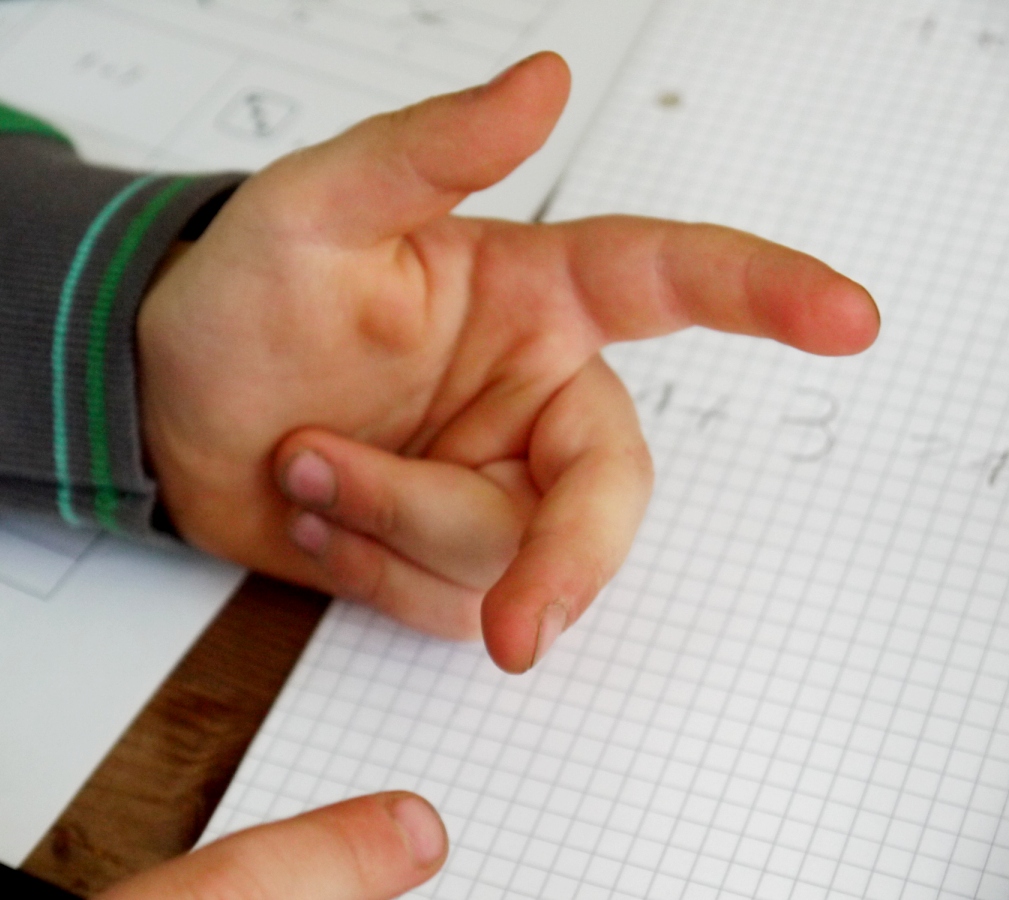Diagnostic procedures
The decision on which child receives further educational support is based on objective data acquired with the help of screenings and curriculum-based measurements (CBM) that are conducted on a regular basis. This procedure helps identify children with numeracy difficulties as soon as possible and prevent them from developing severe learning disabilities in mathematics. Standardized tests identify students who are at risk of poor learning outcomes. Then, a differentiated and qualitative diagnostic procedure is applied that helps asses the student’s skills and working methods. You can have a look at all proceedings applied in the list below.
Screenings

In theRügen Inclusion Modelwe conduct two screenings per school year, one at the beginning and one at the end of the school year. All procedures are completed by the students during the lesson and can be evaluated within a short time. Screenings in mathematics help to assess, if a student has reached learning objectives and skills required by the curriculum. In this way, the teacher can assess at the beginning of first grade whether a child manages fundamental early numeracy skills as they are an essential precondition for further arithmetic competencies that need to be gained during math lessons. In this way, the teacher gets a profound overview of each student's current state of knowledge. Moreover, the teacher is able to identify children with (special) educational needs and can initiate individual supporting measures as soon as possible.
Documentation of learning progress with CBM

Every four weeks, curriculum-based measurements (CBM) are conducted that document the learning progress of each school child. In this way, teachers are able to detect stagnation in learning processes and react adequately within a short time. Until now, there has not been much research done about CBM in elementary mathematics lessons which is why there are not many applicable procedures for educators in practice. CBM that we use for the RIM-project were first designed at the University of Rostock during the first schooling phase of the project. Afterwards, we evaluated an independent sample.
→ Here, you can find an overview of CBM designed for the RIM-project by the University of Rostock.
Overview of general procedures
The following table lists all the screenings and CBM applied in the project. Procedures written in italics can be used alternatively. If you click on a particular screening or CBM, an external link to a short briefing opens that contains further information.
Screenings and CBM applied in RIM
Annotations: MÜSC– Münsteran screening; IEL-1 – inventory to assess reading skills of first year students; CBM – curriculum-based measurements, FE-l – formative evaluation reading; FE-RS – formative evaluation spelling; LDL – learning progress
| SW | Grade 1 | Grade 2 | Grade 3 | Grade 4 |
|---|---|---|---|---|
| 3/4 | KEKS 1 Beginning or Calculia Part 1 | KEKS 2 Beginning or Calculia Part 3 | KEKS 3 Beginning or FE-AF 2 | KEKS 4 Beginning or Mathes 3 |
| 8 | CBM NS 1 | CBM NS 3 | ELEA 3 | ELEA 4 |
| 12 | CBM NS 1 | CBM NS 3 | ELEA 3 | ELEA 4 |
| 16 | CBM NS 1 | CBM NS 3 | ELEA 3 | ELEA 4 |
| 20/21 | KEKS 1 Middle or Calculia Part 2 | KEKS 2 Middle or FE-AF 2 | KEKS 3 Middle or Mathes 3 | KEKS 4 Middle or "Standard of Education: Checking and Improving Competencies – Mathematics |
| 24 | CBM NS 2 | CBM NS 4 | ELEA 3 | ELEA 4 |
| 28 | CBM NS 2 | CBM NS 4 | ELEA 3 | ELEA 4 |
| 32 | CBM NS 2 | CBM NS 4 | ELEA 3 | ELEA 4 |
| 36 | CBM NS 2 | CBM NS 4 | ELEA 3 | ELEA 4 |
| 40 | (CBM NS 2) | (CBM NS 4) | (ELEA 3) | KEKS 4 Ü (and ELEA 4) |
Qualitative diagnostics
When a student with learning disabilities is identified via screenings and/or CBM, the teacher needs to gain more insight into the skills and difficulties of the student and try to investigate possible reasons for occurring issues. Such a qualitative diagnostic procedure is applied on the second and third prevention level. Due to individual demands and the complex nature of mathematics, which is already present at elementary schools, a qualitative diagnostic can only be made using standardized testing procedures. In order to support teachers, the University of Rostock provides a manual for diagnostic procedures including diagnostic sheets. They help to assess the the students’ exact state of knowledge and development for mathematics core contents. The manual is designed as a mathematics navigation system (Math-Nav).
References
Granzer, D., Reiss, K., Winkelmann, H., Robitzsch, A., Köller, O. & Walther, G. (2008). Bildungsstandards: Kompetenzen überprüfen. Mathematik Grundschule Klasse 3/4. Berlin: Cornelsen.
Kuhlmann, K. & Hartke, B. (2011b). Formative Erfassung arithmetischer Fähigkeiten im 2. Schuljahr. Rostock: Universität Rostock.
Fritz, A., Ricken, G. & Gerlach, M. (2007). Kalkulie. Handreichung zur Durchführung einer Diagnose. Berlin: Cornelsen.
KEKS 1-4 (Kompetenzerfassung in Kindergarten und Schule – Mathematik)
Sikora, S. & Hartke, B. (2012). Formative Erfassung der mathematischen Kompetenz von Drittklässlern. Mathes 3. Versuchsversion. Rostock: Universität Rostock.
Sikora, S. & Voß, S. (2014). Erfassung der Leistungsentwicklung Arithmetik in dritten und vierten Klassen. ELEA 3-4. Versuchsversion. Rostock: Universität Rostock.
Voß, S. & Hartke, B. (2014). Curriculumbasierte Messverfahren (CBM) als Methode der formativen Leistungsdiagnostik im RTI-Ansatz. In M. Hasselhorn, W. Schneider & U. Trautwein (Eds.), Lernverlaufsdiagnostik. Tests und Trends NF Vol. 12 (p. 83-99). Göttingen: Hogrefe.
